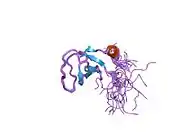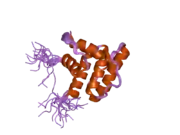| ARHGEF6 | |||||||||||||||||||||||||||||||||||||||||||||||||||
|---|---|---|---|---|---|---|---|---|---|---|---|---|---|---|---|---|---|---|---|---|---|---|---|---|---|---|---|---|---|---|---|---|---|---|---|---|---|---|---|---|---|---|---|---|---|---|---|---|---|---|---|
 | |||||||||||||||||||||||||||||||||||||||||||||||||||
| |||||||||||||||||||||||||||||||||||||||||||||||||||
| Identifiers | |||||||||||||||||||||||||||||||||||||||||||||||||||
| Aliases | ARHGEF6, COOL2, Cool-2, MRX46, PIXA, alpha-PIX, alphaPIX, Rac/Cdc42 guanine nucleotide exchange factor 6 | ||||||||||||||||||||||||||||||||||||||||||||||||||
| External IDs | OMIM: 300267 MGI: 1920591 HomoloGene: 3561 GeneCards: ARHGEF6 | ||||||||||||||||||||||||||||||||||||||||||||||||||
| |||||||||||||||||||||||||||||||||||||||||||||||||||
| |||||||||||||||||||||||||||||||||||||||||||||||||||
| |||||||||||||||||||||||||||||||||||||||||||||||||||
| |||||||||||||||||||||||||||||||||||||||||||||||||||
| |||||||||||||||||||||||||||||||||||||||||||||||||||
| Wikidata | |||||||||||||||||||||||||||||||||||||||||||||||||||
| |||||||||||||||||||||||||||||||||||||||||||||||||||
Rho guanine nucleotide exchange factor 6 is a protein that, in humans, is encoded by the ARHGEF6 gene.[5][6][7]
ARHGEF6 is commonly known as the p21-activated protein kinase exchange factor alpha (alpha-PIX or αPIX), because it was identified by binding to p21-activated kinase (PAK) and also contains a guanine nucleotide exchange factor domain.[6]
Domains and functions
αPIX is a multidomain protein that functions both as a signaling scaffold protein and as an enzyme.[8] αPIX shares this domain structure and signaling function with the highly similar ARHGEF7/βPIX protein. αPIX contains a central DH/PH RhoGEF domain that functions as a guanine nucleotide exchange factor (GEF) for small GTPases of the Rho family, and specifically Rac and Cdc42.[6] Like other GEFs, αPIX can promote both release of GDP from an inactive small GTP-binding protein and binding of GTP to promote its activation. Signaling scaffolds bind to specific partners to promote efficient signal transduction by arranging sequential elements of a pathway near each other to facilitate interaction/information transfer, and also by holding these partner protein complexes in specific locations within the cell to promote local or regional signaling. In the case of αPIX, its SH3 domain binds to partner proteins with appropriate polyproline motifs, and particularly to group I p21-activated kinases (PAKs) (PAK1, PAK2 and PAK3).[6] PAK is bound to the αPIX SH3 domain in the inactive state, and activated Rac1 or Cdc42 binding to this PAK stimulates its protein kinase activity leading to downstream target protein phosphorylation; since αPIX can activate the “p21’’ small GTPases Rac1 or Cdc42 through its GEF activity, this αPIX/PAK/Rac complex exemplifies a scaffolding function. Structurally, αPIX assembles as a trimer through its carboxyl-terminal coiled-coil domain, and further interacts with dimers of GIT1 or GIT2 through a nearby GIT-binding domain to form oligomeric GIT-PIX complexes.[8] Through this GIT-PIX complex, the scaffolding function of αPIX is amplified by also being able to hold GIT partners in proximity to αPIX partners. αPIX contains an amino-terminal Calponin Homology (CH) domain whose functions remain relatively poorly defined, but interacts with parvin/affixin family proteins. [9][8]
Because the ARHGEF6 gene is located on the X chromosome so that males have only one copy, mutations in this gene in humans can cause X-chromosome-linked non-specific intellectual disability, [10] as can mutations affecting its binding partner PAK3 whose gene is also located on the X chromosome.[11] In animal models, loss of ARHGEF6 gene function is associated with neuronal synapse defects,[12] immune T-cell migration and maturation defects,[13] and hearing loss.[14]
Interactions
αPIX has been reported to interact with over 40 proteins.[8][15]
Major interacting proteins include:
- Itself, or the highly-related ARHGEF7/βPIX via a trimeric coiled-coil interaction.
- GIT1 or GIT2 dimers via GIT-binding domain.
- p21-activated kinases (PAKs) 1, 2 and 3 via SH3 domain.
- c-Cbl via SH3 domain.
- Rho family GTP-binding protein family members Rac1 and Cdc42, activated via DHPH RhoGEF domain.
See also
References
- 1 2 3 GRCh38: Ensembl release 89: ENSG00000129675 - Ensembl, May 2017
- 1 2 3 GRCm38: Ensembl release 89: ENSMUSG00000031133 - Ensembl, May 2017
- ↑ "Human PubMed Reference:". National Center for Biotechnology Information, U.S. National Library of Medicine.
- ↑ "Mouse PubMed Reference:". National Center for Biotechnology Information, U.S. National Library of Medicine.
- ↑ Nomura N, Nagase T, Miyajima N, Sazuka T, Tanaka A, Sato S, Seki N, Kawarabayasi Y, Ishikawa K, Tabata S (Dec 1995). "Prediction of the coding sequences of unidentified human genes. II. The coding sequences of 40 new genes (KIAA0041-KIAA0080) deduced by analysis of cDNA clones from human cell line KG-1 (supplement)". DNA Res. 1 (5): 251–62. doi:10.1093/dnares/1.5.251. PMID 7584048.
- 1 2 3 4 Manser E, Loo TH, Koh CG, Zhao ZS, Chen XQ, Tan L, Tan I, Leung T, Lim L (Jul 1998). "PAK kinases are directly coupled to the PIX family of nucleotide exchange factors". Mol Cell. 1 (2): 183–92. doi:10.1016/S1097-2765(00)80019-2. PMID 9659915.
- ↑ "Entrez Gene: ARHGEF6 Rac/Cdc42 guanine nucleotide exchange factor (GEF) 6".
- 1 2 3 4 Zhou W, Li X, Premont RT (May 2016). "Expanding functions of GIT Arf GTPase-activating proteins, PIX Rho guanine nucleotide exchange factors and GIT-PIX complexes". Journal of Cell Science. 129 (10): 1963–1974. doi:10.1242/jcs.179465. PMC 6518221. PMID 27182061.
- ↑ Rosenberger G, Jantke I, Gal A, Kutsche K (2003). "Interaction of alphaPIX (ARHGEF6) with beta-parvin (PARVB) suggests an involvement of alphaPIX in integrin-mediated signaling". Human Molecular Genetics. 12 (2): 155–167. doi:10.1093/hmg/ddg019. PMID 12499396.
- ↑ Kutsche K, Yntema H, Brandt A, Jantke I, Nothwang HG, Orth U, Boavida MG, David D, Chelly J, Fryns JP, Moraine C, Ropers HH, Hamel BC, van Bokhoven H, Gal A (2000). "Mutations in ARHGEF6, encoding a guanine nucleotide exchange factor for Rho GTPases, in patients with X-linked mental retardation". Nature Genetics. 26 (2): 247–250. doi:10.1038/80002. PMID 11017088. S2CID 12325765.
- ↑ Allen KM, Gleeson JG, Bagrodia S, Partington MW, MacMillan JC, Cerione RA, Mulley JC, Walsh CA (September 1998). "PAK3 mutation in nonsyndromic X-linked mental retardation". Nature Genetics. 20 (1): 25–30. doi:10.1038/1675. PMID 9731525. S2CID 16041444.
- ↑ Ramakers GJ, Wolfer D, Rosenberger G, Kuchenbecker K, Kreienkamp HJ, Prange-Kiel J, Rune G, Richter K, Langnaese K, Masneuf S, Bösl MR, Fischer KD, Krugers HJ, Lipp HP, van Galen E, Kutsche K (January 2012). "Dysregulation of Rho GTPases in the αPix/Arhgef6 mouse model of X-linked intellectual disability is paralleled by impaired structural and synaptic plasticity and cognitive deficits" (PDF). Human Molecular Genetics. 21 (2): 268–286. doi:10.1093/hmg/ddr457. hdl:20.500.11850/41564. PMID 21989057.
- ↑ Korthals M, Schilling K, Reichardt P, Mamula D, Schlüter T, Steiner M, Langnäse K, Thomas U, Gundelfinger E, Premont RT, Tedford K, Fischer KD (April 2014). "αPIX RhoGEF supports positive selection by restraining migration and promoting arrest of thymocytes". Journal of Immunology. 192 (7): 3228–3238. doi:10.4049/jimmunol.1302585. PMID 24591366.
- ↑ Zhu C, Cheng C, Wang Y, Muhammad W, Liu S, Zhu W, Shao B, Zhang Z, Yan X, He Q, Xu Z, Yu C, Qian X, Lu L, Zhang S, Zhang Y, Xiong W, Gao X, Xu Z, Chai R (October 2018). "Loss of ARHGEF6 Causes Hair Cell Stereocilia Deficits and Hearing Loss in Mice". Frontiers in Molecular Neuroscience. 11: 362. doi:10.3389/fnmol.2018.00362. PMC 6176010. PMID 30333726.
- ↑ "ARHGEF6 Result Summary".
External links
- Human ARHGEF6 genome location and ARHGEF6 gene details page in the UCSC Genome Browser.
- Overview of all the structural information available in the PDB for UniProt: Q15052 (Human Rho guanine nucleotide exchange factor 6) at the PDBe-KB.
- Overview of all the structural information available in the PDB for UniProt: Q8K4I3 (Mouse Rho guanine nucleotide exchange factor 6) at the PDBe-KB.
Further reading
- Yntema HG, Hamel BC, Smits AP, et al. (1999). "Localisation of a gene for non-specific X linked mental retardation (MRX46) to Xq25-q26". J. Med. Genet. 35 (10): 801–5. doi:10.1136/jmg.35.10.801. PMC 1051453. PMID 9783701.
- Yoshii S, Tanaka M, Otsuki Y, et al. (1999). "alphaPIX nucleotide exchange factor is activated by interaction with phosphatidylinositol 3-kinase". Oncogene. 18 (41): 5680–90. doi:10.1038/sj.onc.1202936. PMID 10523848.
- Brown A, Wang X, Sawai E, Cheng-Mayer C (1999). "Activation of the PAK-related kinase by human immunodeficiency virus type 1 Nef in primary human peripheral blood lymphocytes and macrophages leads to phosphorylation of a PIX-p95 complex". J. Virol. 73 (12): 9899–907. doi:10.1128/JVI.73.12.9899-9907.1999. PMC 113039. PMID 10559302.
- Premont RT, Claing A, Vitale N, et al. (2000). "The GIT family of ADP-ribosylation factor GTPase-activating proteins. Functional diversity of GIT2 through alternative splicing". J. Biol. Chem. 275 (29): 22373–80. doi:10.1074/jbc.275.29.22373. PMID 10896954.
- Lower KM, Gecz J (2001). "Characterization of ARHGEF6, a guanine nucleotide exchange factor for Rho GTPases and a candidate gene for X-linked mental retardation: mutation screening in Börjeson-Forssman-Lehmann syndrome and MRX27". Am. J. Med. Genet. 100 (1): 43–8. doi:10.1002/ajmg.1189. PMID 11337747.
- Yoshii S, Tanaka M, Otsuki Y, et al. (2001). "Involvement of alpha-PAK-interacting exchange factor in the PAK1-c-Jun NH(2)-terminal kinase 1 activation and apoptosis induced by benzo[a]pyrene". Mol. Cell. Biol. 21 (20): 6796–807. doi:10.1128/MCB.21.20.6796-6807.2001. PMC 99857. PMID 11564864.
- Vikis HG, Li W, Guan KL (2002). "The plexin-B1/Rac interaction inhibits PAK activation and enhances Sema4D ligand binding". Genes Dev. 16 (7): 836–45. doi:10.1101/gad.966402. PMC 186329. PMID 11937491.
- Flanders JA, Feng Q, Bagrodia S, et al. (2003). "The Cbl proteins are binding partners for the Cool/Pix family of p21-activated kinase-binding proteins". FEBS Lett. 550 (1–3): 119–23. doi:10.1016/S0014-5793(03)00853-6. PMID 12935897. S2CID 46540220.
- Brill LM, Salomon AR, Ficarro SB, et al. (2004). "Robust phosphoproteomic profiling of tyrosine phosphorylation sites from human T cells using immobilized metal affinity chromatography and tandem mass spectrometry". Anal. Chem. 76 (10): 2763–72. doi:10.1021/ac035352d. PMID 15144186.
- Beausoleil SA, Jedrychowski M, Schwartz D, et al. (2004). "Large-scale characterization of HeLa cell nuclear phosphoproteins". Proc. Natl. Acad. Sci. U.S.A. 101 (33): 12130–5. Bibcode:2004PNAS..10112130B. doi:10.1073/pnas.0404720101. PMC 514446. PMID 15302935.
- Jin J, Smith FD, Stark C, et al. (2004). "Proteomic, functional, and domain-based analysis of in vivo 14-3-3 binding proteins involved in cytoskeletal regulation and cellular organization". Curr. Biol. 14 (16): 1436–50. doi:10.1016/j.cub.2004.07.051. PMID 15324660. S2CID 2371325.






